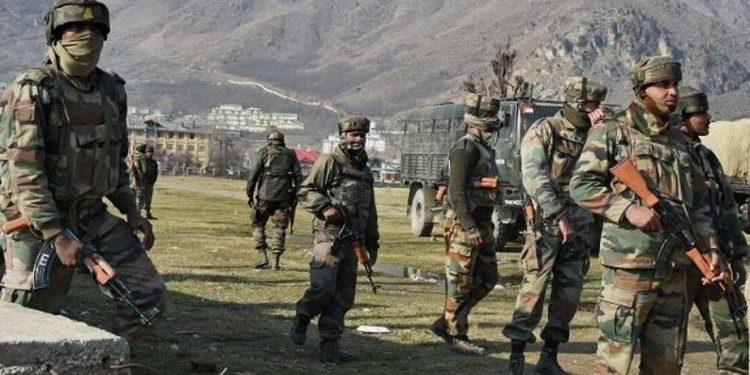Something Surreal as Mamallapuram Beckons Xi Jinping

Indian Army holding its biggest ever mountain combat exercise in Arunachal Pradesh bordering China in Oct 2019
The ancient port city of Mamallapuram on the Coromandel Coast in southern India where the informal summit between PM Modi and Chinese President Xi Jinping may take place, is frenetic with activity. The authorities are busy laying new roads, planting trees and removing hawkers near the city’s monuments. Xi will probably arrive on October 11 and depart the next day.
Hopefully, Xi will see sparkling clean roads, freshly washed monuments and lush greenery along the road to the venue of the summit. Mamallapuram port had trade links with ancient China. Chinese coins have been found there.
But there is something surreal too: Is the visit really on? This summit was to have been the finest flower of PM Modi’s personal diplomacy — follow-up on the Wuhan meeting of April 2018.
However, the Mamallapuram summit will be taking place sans the “Wuhan spirit”. A series of developments affecting India-China relations vitiate the air. So much so that Xi’s visit may turn out to be the ritualistic fulfilment of a commitment from a slice of recent past that drifted away.
Since August 5, the fateful day when the status of J&K was unilaterally changed, a series of developments affecting India-China relations unfolded. There has been a shift in India’s approach to China.
Consider the recent developments. The planned visit by the Chinese State Councilor and Foreign Minister Wang Yi to India on September 9-10 for the boundary talks with National Security Advisor Ajit Doval was cancelled since the Indian side had some “scheduling constraints” and wanted the meeting to be deferred.
On September 17, Indian armed forces held an “integrated exercise” for the first time in the tangled mountains of Eastern Ladakh bordering China, for testing and improving its war-fighting capabilities. The massive, unprecedented exercise involved the use of infantry, mechanised forces, T-72 tanks, with force multipliers such as artillery guns and Unmanned Aerial Vehicles. The army’s aviation assets were also used.
On September 26, Delhi sent an unmistakable signal to Beijing by the External Affairs Minister’s participation in the upgraded ministerial level meeting of the so-called “Quad” (Quadrilateral Security Dialogue comprising the US, Japan, Australia and India) in New York.
The Quad held its first meeting at foreign minister level in New York on September 26, 2019
The Quad is perceived regionally and internationally as code word for the US’ Indo-Pacific strategy to contain China’s rise. The upgradation of the Quad has been described by the US state department’s acting assistant secretary for South and Central Asia Alice Wells as demonstrating the resolve of the four countries “in institutionalising this gathering of like-minded Indo-Pacific partners.”
On October 3, with just one week left for Xi’s visit, military exercise codenamed ‘Him Vijay’ began in Arunachal Pradesh. Three Battle Groups, each comprising around 4000 soldiers, are participating which will include troop mobilisation, mountain assault and air assault. Elements of special forces will also take part. Troops and equipment will be transferred by helicopters to terrain of upto 15,000 ft. ‘Operation Him Vijay’ is billed as the Indian Army’s biggest ever mountain combat exercise.
On October 6, with just 5 days left for Xi’s arrival in India, the Tibetan government-in-exile announced from Dharamsala that the Dalai Lama will choose his successor and “no nation, government, entity or any individual can claim to recognise the reincarnation”. Plainly put, Dharamsala rebuffed Beijing.
Arguably, China’s stance on Kashmir issue cannot account for all these serial happenings within the space of one month.
The heart of the matter is that since Wuhan last year, the tectonic plates have shifted in the US-China relations with tensions building up, and there is no denying the fact that the Indian decision makers are tapping into it. Delhi always hoped for a hardline US policy toward China, which would enhance India’s status in Washington’s calculus as a counterweight to China’s rise.
Thus, a recalibration of India’s diplomacy vis-a-vis China has become inevitable. It can so happen that a country may feel the imperative to degrade the relationship with another at a given time for no good reason than a radically new regional milieu.
India is flaunting the return of “muscular diplomacy” towards China. Senior army commanders, not given to hyperbole, who never reduce the business of war as the stuff of flippant, irresponsible remarks, are belligerent, as if on cue. Delhi has reverted to the pre-Doklam mode.
China’s stance on Kashmir or its criticism of the Indian action on J&K cannot account for all this. The point is, the planning behind the August 5 announcement on J&K began some time ago — possibly predating the 2019 May poll. The replacement of Rajnath Singh as Home Minister and the appointment of S Jaishankar as EAM weren’t unrelated moves, after all. Suffice to say, China’s stance on J&K and Delhi’s dalliance with the “Quad” are unrelated events but symbiotic, nonetheless.
Meanwhile, the diplomatic ties between Delhi and Beijing have deteriorated. India took exception to the Chinese foreign ministry spokesman’s remarks regarding the change of status of J&K (here), to the joint statement issued in Islamabad after Chinese FM Wang’s visit (here) and to Wang’s reference to J&K in his speech at the UN GA (here).
And, with hardly one week left for Xi’s visit to India, Delhi lodged a “strong protest” (rather usually for a Saturday) to reported remarks by the Chinese ambassador to Pakistan to the effect that Beijing is supportive of the fundamental rights and justice for the Kashmiri people and will “stand by Pakistan for regional peace and stability.”
This seems one of those rare occasions when two sides are stuck with a high-level exchange that was conceived under different circumstances in a different matrix. India’s preference today seems to be to exploit the deepening chill in relations with China to breathe new life into its meandering partnership with the US.
Get the latest reports & analysis with people's perspective on Protests, movements & deep analytical videos, discussions of the current affairs in your Telegram app. Subscribe to NewsClick's Telegram channel & get Real-Time updates on stories, as they get published on our website.
























